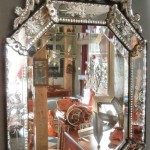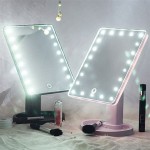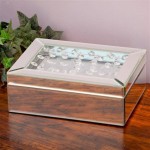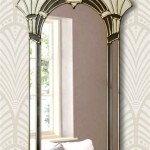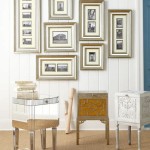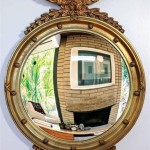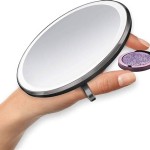Stand Alone Mirrors: A Comprehensive Guide
Stand alone mirrors, also known as cheval mirrors or full-length mirrors with stands, are versatile and functional additions to any living space. They offer a complete reflection, allowing individuals to assess their entire outfit and appearance from head to toe. Beyond their practical utility, stand alone mirrors also contribute significantly to the aesthetic appeal of a room, enhancing light, creating the illusion of space, and serving as a stylish decorative element. This article provides a comprehensive overview of stand alone mirrors, exploring their various types, benefits, considerations for selection, and optimal placement strategies.
Types of Stand Alone Mirrors
The market offers a wide array of stand alone mirrors, each characterized by distinct features, designs, and construction materials. Understanding these variations is crucial for selecting a mirror that aligns with individual preferences and spatial requirements. The primary distinctions lie in the stand design, frame material, and overall style.
Cheval Mirrors: This classic design features a mirror supported by a frame with pivoting hinges. The hinges allow the user to tilt the mirror forward or backward to achieve the desired viewing angle. Cheval mirrors often boast an elegant and traditional aesthetic, making them suitable for bedrooms, dressing rooms, or entryways with a formal decor style. The frame material can range from wood, metal, to even upholstered options, offering flexibility in matching existing furniture.
Floor Mirrors with Easel Stands: These mirrors use an easel-style stand to provide support. The angle of the mirror is typically fixed, though some models offer adjustable easel arms. Floor mirrors with easel stands often possess a more contemporary and minimalist design compared to cheval mirrors. They are suitable for various interior design styles and are particularly well-suited for maximizing space, due to their relatively slim profile.
Full-Length Mirrors with Fixed Stands: This category encompasses mirrors that have a permanently attached stand, often consisting of either a wide base for stability or two or more legs. The mirror's angle is typically fixed, offering a stable and secure reflection. These mirrors can range from ornate and traditional to sleek and modern, depending on the design of the frame and stand. They are a popular choice for bedrooms, walk-in closets, and retail settings.
Frameless Stand Alone Mirrors: These mirrors ditch the traditional frame, offering a clean and minimalist look. They typically rely on a simple stand design, focusing attention on the reflective surface itself. Frameless mirrors are suitable for modern and contemporary interiors, contributing to a sense of spaciousness and light.
Framed Stand Alone Mirrors: Conversely, framed mirrors utilize a frame to accentuate the mirror's shape and style. The frame material can vary widely, including wood, metal, plastic, and even decorative elements like mosaic tiles or intricate carvings. The frame's design significantly influences the mirror's overall aesthetic, allowing it to complement various interior design styles, from rustic to glamorous.
Benefits of Incorporating Stand Alone Mirrors
Stand alone mirrors offer a multitude of benefits, extending beyond their primary function as reflective surfaces. They can significantly enhance the functionality and aesthetics of a space.
Full Body Reflection: The most obvious benefit is the ability to view one's entire body reflection. This is particularly useful for selecting outfits, assessing overall appearance, and ensuring a polished look before leaving the house. For individuals involved in professions that require a professional appearance, a stand alone mirror is an indispensable tool.
Enhancing Natural Light: Mirrors reflect light, making them valuable for brightening up dimly lit rooms. Strategic placement of a stand alone mirror near windows or light sources can amplify natural light, creating a more cheerful and inviting atmosphere. In spaces lacking sufficient natural light, the mirror can reflect artificial light, achieving a similar effect.
Creating the Illusion of Space: Mirrors inherently create the illusion of depth, making rooms appear larger and more spacious. A stand alone mirror placed strategically in a small room can visually expand the space, making it feel less cramped. This is particularly beneficial for apartments, small bedrooms, and narrow hallways.
Serving as a Decorative Element: Stand alone mirrors are not merely functional objects; they also serve as decorative elements that can enhance the overall aesthetic of a room. The frame design, material, and overall style of the mirror can complement existing furniture and décor, adding a touch of elegance, sophistication, or personality to the space. A carefully chosen mirror can act as a focal point within a room, drawing the eye and creating visual interest.
Versatility and Portability: Unlike wall-mounted mirrors, stand alone mirrors offer greater flexibility in terms of placement. They can be easily moved from one room to another as needed, allowing for reconfiguration of space or adaptation to changing needs. This portability makes them particularly suitable for renters or individuals who frequently rearrange their furniture.
Considerations for Selecting a Stand Alone Mirror
Choosing the right stand alone mirror requires careful consideration of several factors, including size, style, placement, and budget. Addressing these factors ensures that the selected mirror meets individual needs and complements the existing décor.
Size and Dimensions: The size of the mirror should be proportionate to the size of the room and the available space. A large mirror in a small room can overwhelm the space, while a small mirror in a large room may appear insignificant. Consider the height and width of the mirror to ensure that it provides a full-body reflection for the intended user. Measure the available space before making a purchase to avoid any fitment issues.
Style and Design: The style and design of the mirror should complement the overall décor of the room. Consider the color palette, furniture style, and existing accessories. A modern room might benefit from a frameless or minimalist mirror, while a traditional room might be better suited to a cheval mirror with an ornate frame. The goal is to select a mirror that seamlessly integrates with the existing aesthetic.
Placement and Positioning: The placement of the mirror is crucial for maximizing its benefits. Consider the available light sources, the desired viewing angles, and the overall flow of the room. Placing the mirror near a window or light source can amplify natural light. Angle the mirror strategically to create the illusion of more space. Avoid placing the mirror in areas where it might be easily knocked over or where it reflects unpleasant views.
Frame Material and Durability: The frame material influences the mirror's durability, style, and maintenance requirements. Wood frames offer a classic and elegant look but may require more maintenance to prevent warping or damage. Metal frames are more durable and often offer a sleek and modern aesthetic. Plastic frames are lightweight and affordable but may not be as durable as wood or metal. Consider the frame material's resistance to humidity and temperature changes, particularly if the mirror is placed in a bathroom or other damp environment.
Budget: Stand alone mirrors are available in a wide range of price points, depending on their size, style, frame material, and features. Establish a budget before beginning the search to narrow down the options. Consider the long-term value of the mirror and prioritize quality over price if possible. A well-made mirror can last for many years and provide lasting enjoyment.
Safety: When selecting a stand alone mirror, safety should be a paramount concern. Ensure that the mirror's stand is stable and sturdy to prevent it from tipping over. Consider mirrors with tempered glass, which is more resistant to breakage and shatters into small, relatively harmless pieces if broken. If the mirror is placed in a high-traffic area or a room with children or pets, consider anchoring the mirror to the wall for added stability.
By carefully considering these factors, selecting a stand alone mirror becomes a more informed and effective process, ensuring that the chosen mirror meets both functional and aesthetic requirements, while enhancing the living space for years to come.

Deep Frame Metal Floor Mirror 30 W X 72 H West Elm

Neutype 51 X16 Rectangular Full Length Floor Mirror With Stand Gold Com

Metal Frame Oversized Floor Mirror 39 W X 78 H West Elm

Maude Floor Mirror Anthroliving

Rhea Arched Full Length Mirror 71 X31 Large Floor With Stand Or Leaning Against Wall For Bedroom The Pop Home Target

Rustic Floor Mirror Full Length Reclaimed Big Wood Bedroom Wall Decor

Industrial Metal Wood Floor Mirror

Edge Oak Standing Mirror Reviews Crate Barrel

20 X 66 Oak And Metal Modern Floor Mirror Brown Project 62 Target

Oversized Floor Mirror Tall Narrow Full Length

